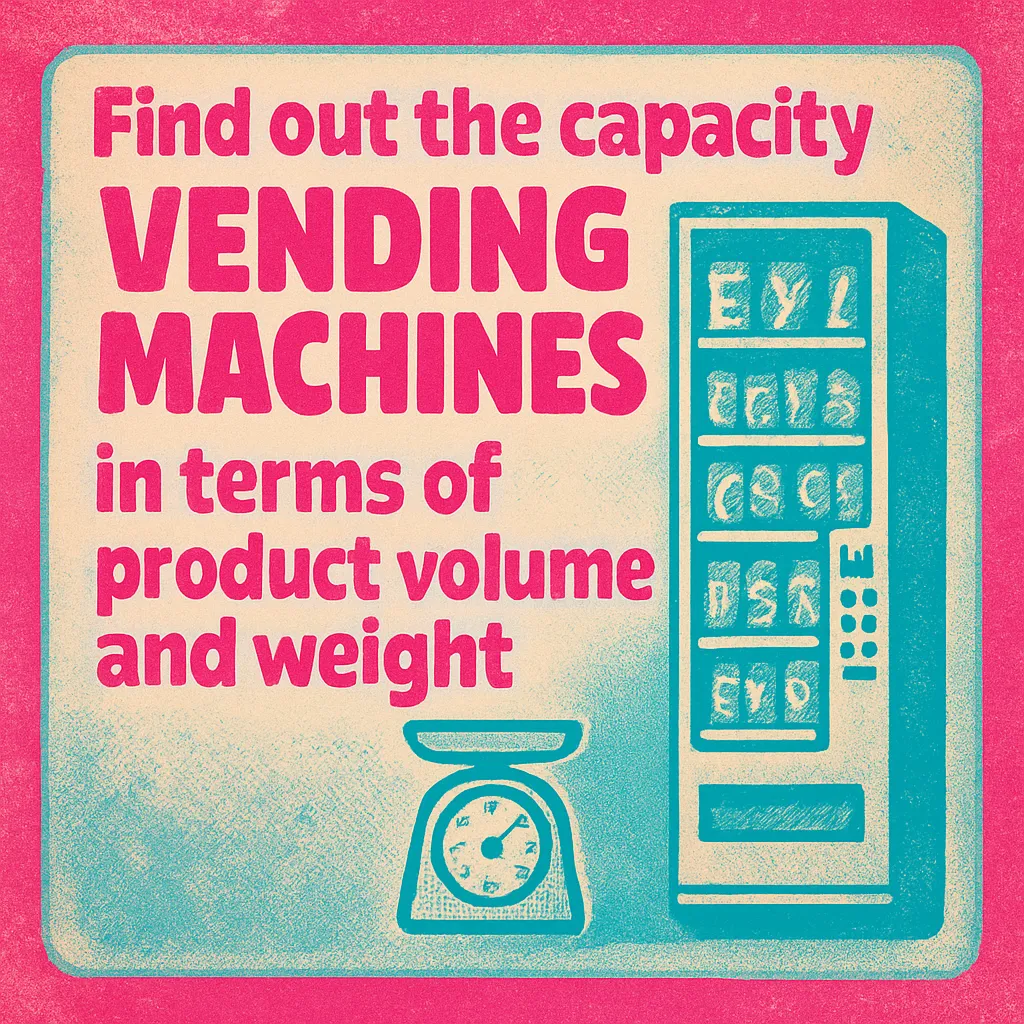How Much Weight Does a Vending Machine Hold?
Find out the capacity of vending machines in terms of product volume and weight.
Back to Vending FAQs ResourcesFind out the capacity of vending machines in terms of product volume and weight.
Back to Vending FAQs ResourcesBeyond their empty weight, the true carrying capacity of a vending machine, especially when fully stocked, is a critical factor for placement and logistics.
![]() Standard machines weigh 500-700 lbs empty
Standard machines weigh 500-700 lbs empty
![]() Can hold an additional 200-500 lbs of products
Can hold an additional 200-500 lbs of products
![]() Total weight impacts transportation and ideal location
Total weight impacts transportation and ideal location

When considering adding a vending machine to your business or facility, one aspect that often gets overlooked is its significant weight, both empty and when fully stocked. Understanding these figures is crucial for proper planning, delivery, and placement. From the structural integrity of your floor to the logistics of transport, the weight of a vending machine plays a more vital role than many realize.
A standard empty snack vending machine typically weighs anywhere from 500 to 700 pounds (227 to 318 kg). Beverage machines, due to their robust construction and larger capacity for heavier liquid products, can often exceed this, sometimes starting at around 800 pounds (363 kg) when empty. This base weight is primarily composed of heavy-gauge steel for security and durability, reinforced glass panels, internal mechanisms, and refrigeration units. This empty weight is a primary factor in determining how long it takes to install a vending machine and the necessary equipment for the job.
Once a vending machine is stocked with products, its weight increases substantially. A fully loaded machine can hold an additional 200 to 500 pounds (90 to 227 kg) of inventory. This means a beverage machine, for instance, could easily reach a total weight of 1,000 to 1,200 pounds (454 to 544 kg) or more, depending on the number of selections and the type of drinks. Snack machines, while generally lighter than beverage-only models, can still become very heavy, often exceeding 800 pounds (363 kg) when full. The density of products matters too; candy bars weigh less than bottled water, for example.
For businesses keen on maximizing their space and offering diverse options, considering a combo vending machine might seem like a solution. However, combining both snacks and drinks means consolidating the weight of both types of products into a single unit, which could potentially result in an even heavier machine than dedicated snack or beverage units. While efficient, their total weight capacity planning should not be underestimated.
Ultimately, a vending machine's weight is a crucial engineering and logistical consideration. Knowing its full capacity helps businesses plan effectively, ensuring safe and seamless integration into their environment, providing convenient refreshments without unexpected challenges.
An empty standard snack vending machine typically weighs between 500 to 700 pounds (227 to 318 kg), while beverage machines can be heavier.
When fully stocked, a vending machine can hold an additional 200 to 500 pounds (90 to 227 kg) of product, leading to a total weight sometimes exceeding 1,200 pounds (544 kg).
Yes, snack machines, beverage machines, and combo units have varying weight capacities due to their internal mechanisms and the density of the products they dispense. Combo machines generally have the highest capacity to hold both.
Factors include construction materials (steel, glass), a number of product shelves, type of refrigeration unit, coin/bill mechanisms, and the type/quantity of products being stocked.
Absolutely. The total weight (empty and full) determines if the floor can support it, what kind of moving equipment is needed, and if specialized delivery is required.
A fully stocked snack machine might weigh between 700 to 900 pounds (318 to 408 kg), depending on the machine size and snack density.
Beverage machines tend to be heavier due to the weight of liquids. A fully stocked soda or water machine can easily weigh 1,000 to 1,200 pounds (454 to 544 kg).
Yes, there are compact and smaller vending options, such as countertop units or slim-line models, which weigh significantly less, making them suitable for smaller spaces.
The weight is typically distributed across the base of the machine. Heavier components like the refrigeration unit are usually at the bottom, and product weight is spread across shelves.
Properly loaded and leveled machines are very stable due to their inherent weight and design. However, an improperly loaded or placed machine could be unstable.